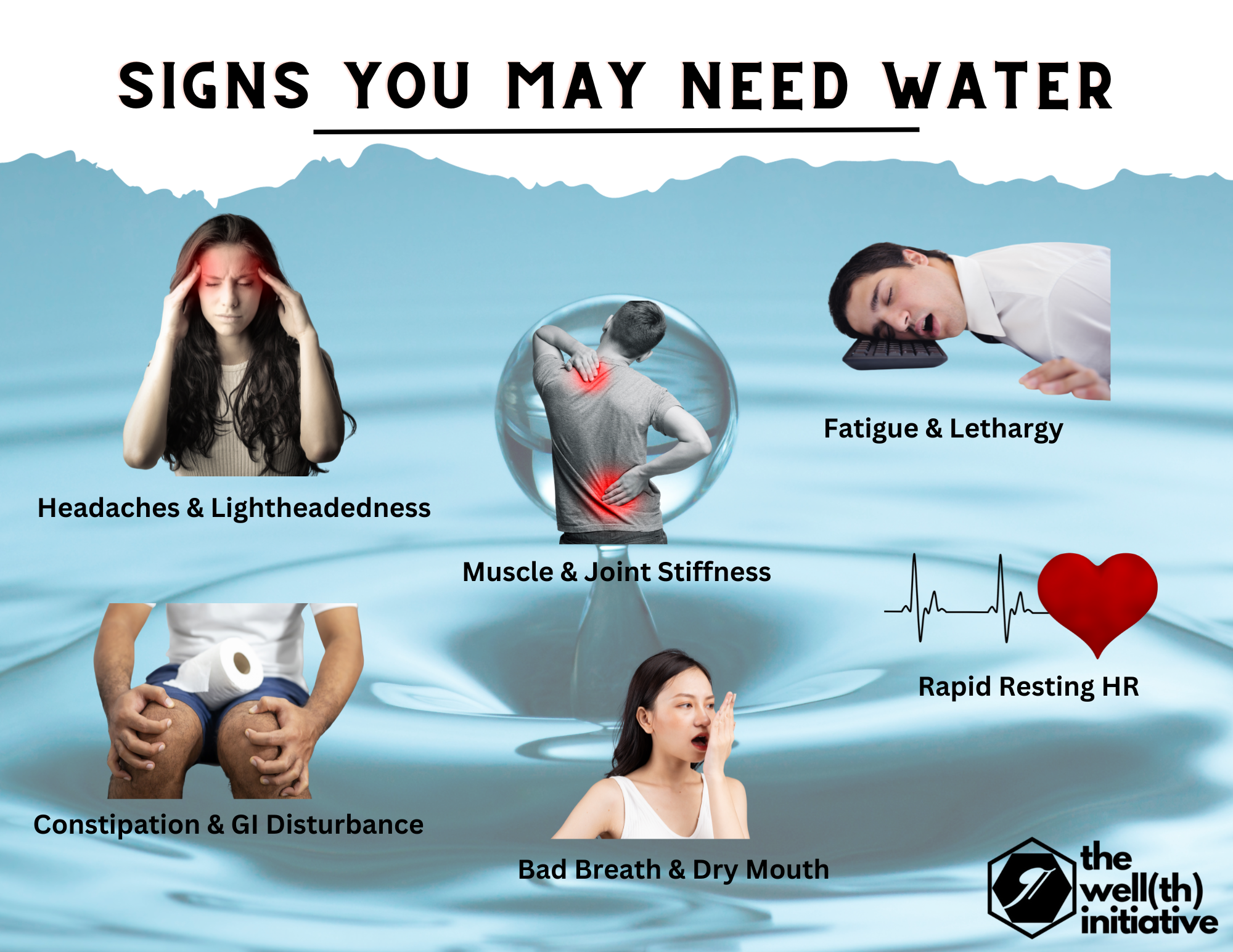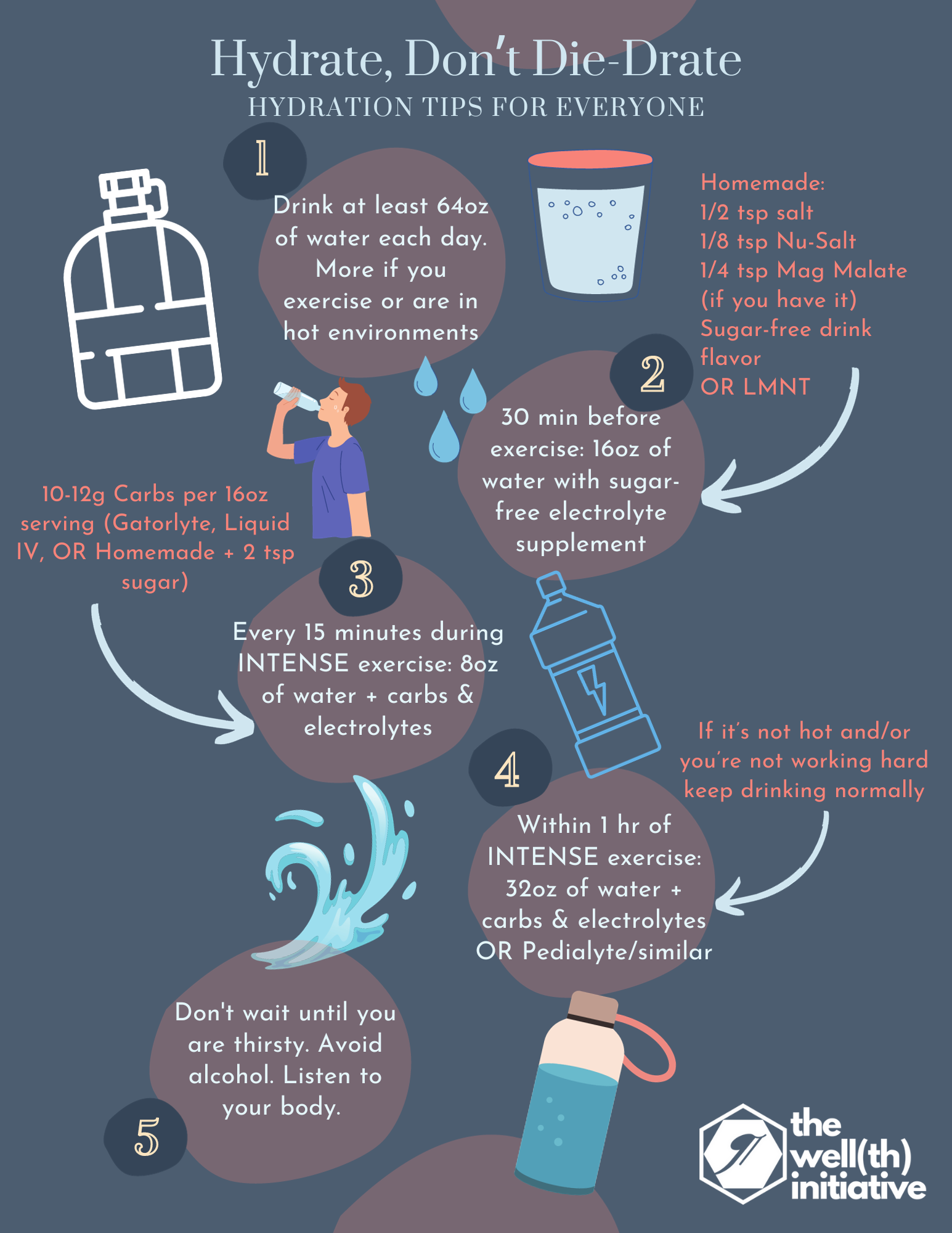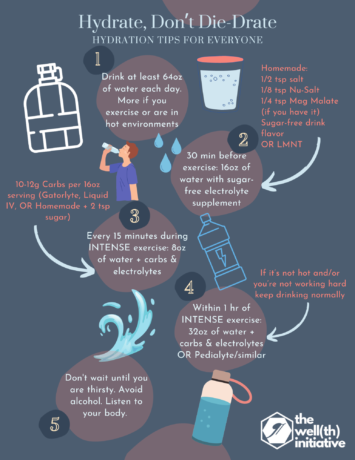Dehydration & Fluid Imbalance: The Basics
Understanding Dehydration
Your body regularly loses water through various processes, and if it isn’t adequately replenished, it can lead to dehydration. Certain individuals are at a higher risk, including athletes, those exposed to heat, older adults, those on certain medications and individuals with chronic conditions.
When the body lacks adequate hydration, it signals thirst as a natural response. Responding promptly to this signal by consuming fluids, particularly water, is crucial as thirst increases AFTER you are already lacking hydration. Mild cases of dehydration can often be resolved by increasing fluid intake. However, identifying dehydration may not always be straightforward, as it can affect individuals who may overlook the importance of proper hydration, such as the elderly or infants who cannot communicate their thirst.
Common Causes of Dehydration
Some common causes of dehydration and fluid imbalance include excessive sweating, vomiting, and diarrhea. Other causes may be diuretic medications and chronic diseases with excessive water dumping. Maintaining adequate hydration levels is critical for overall well-being. The two main types of dehydration are:
- Hypertonic Dehydration: Predominantly a pure water deficit due to insufficient drinking or excessive sweating. Usually corrected with increased water intake.
- Isotonic Dehydration: Water deficit accompanied by proportionate electrolyte loss. Usually corrected with a more balanced approach such as with drink containing electrolytes and sometimes sugar.
The Dangers of Dehydration
- Electrolyte Imbalances
- Loss of motor control
- Impaired decision making & mental acuity
- Heat-related illnesses such as heat stress, heat exhaustion and heat stroke
- Kidney problems including kidney stones and kidney failure
- Shock, coma, and death
Recognizing Symptoms
Symptoms of dehydration can vary from mild to severe, with different signs indicating the level of dehydration. Being aware of these symptoms can help in timely intervention and prevention of further complications. If you are interested in a more comprehensive list of signs and symptoms as well as differences between adults and children follow this link to The Cleveland Clinic.
Below is a graphic illustrating a few of the more common signs and symptoms of dehydration.

Diagnosis & Treatment of Dehydration
Proper diagnosis is essential in determining the severity of dehydration and can only be done by a medical professional. Assessment of signs and symptoms and urine color charts do not replacement medical assessment and treatment. However, if you suspect you are suffering from acute or chronic dehydration then rehydration, electrolyte replacement, and management of related symptoms are important as you seek out further care from a medical professional.
Prevention
Untreated dehydration can lead to severe complications, emphasizing the importance of preventive measures.
To prevent dehydration, it’s essential to monitor your fluid intake regularly. Aim to drink water consistently throughout the day, including during meals, and limit the consumption of soda, alcohol, and caffeinated beverages. Monitoring the color of your urine can serve as a simple indicator of your hydration status. Clear, pale, or straw-colored urine is generally a good sign, while darker urine suggests the need for increased fluid intake.
For individuals engaged in physical activities or sports, ensuring proper hydration is essential. Before starting any outdoor activities, it’s advisable to consume 16 to 20 ounces of fluids at least one to two hours beforehand. During the activity, maintaining hydration by drinking 6 to 12 ounces of fluids every 10 to 15 minutes is recommended. After completing the activity, individuals should replenish lost fluids by consuming an additional 16 to 24 ounces of water.
These guidelines, including some tips during intense or heat-exposed exercise, are illustrated in the graphic below.

Final Thoughts
Dehydration denotes an insufficient amount of water in the body, which can result from various causes and potentially pose a threat if not addressed promptly.
It’s important to note that feeling thirsty indicates a state of dehydration, emphasizing the need to consume water as soon as you notice any signs of thirst.
Replenishing fluids when experiencing thirst can lead to noticeable improvements in dehydration symptoms within a short span of 5 to 10 minutes.
Determining the appropriate daily water intake depends on individual factors, making it advisable to consult a healthcare provider to establish the precise amount necessary to maintain optimal health.







